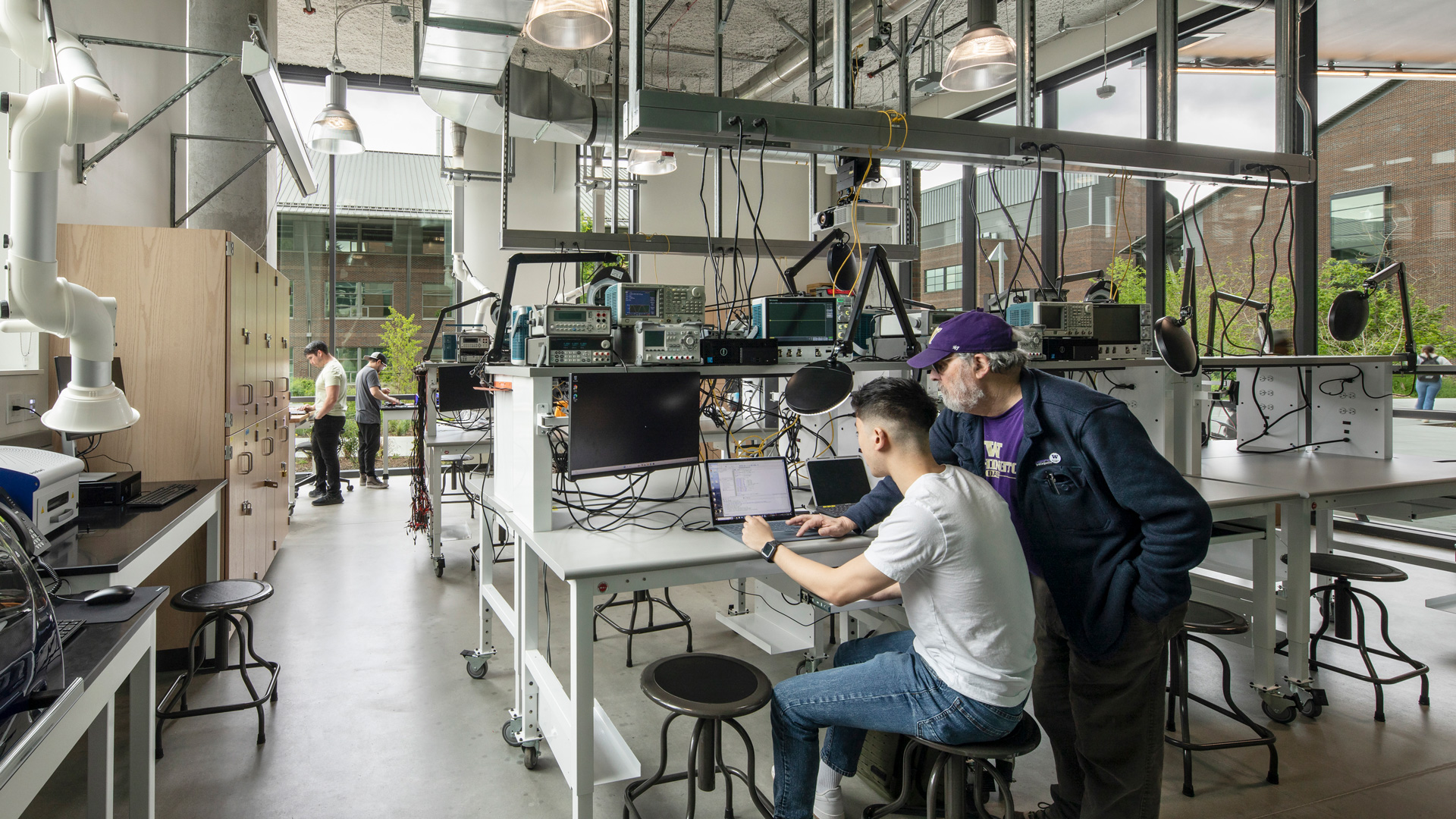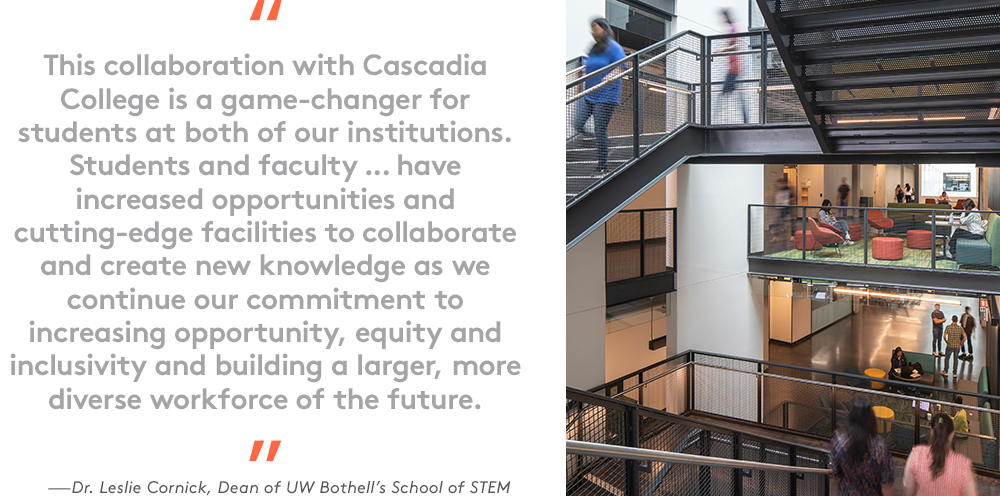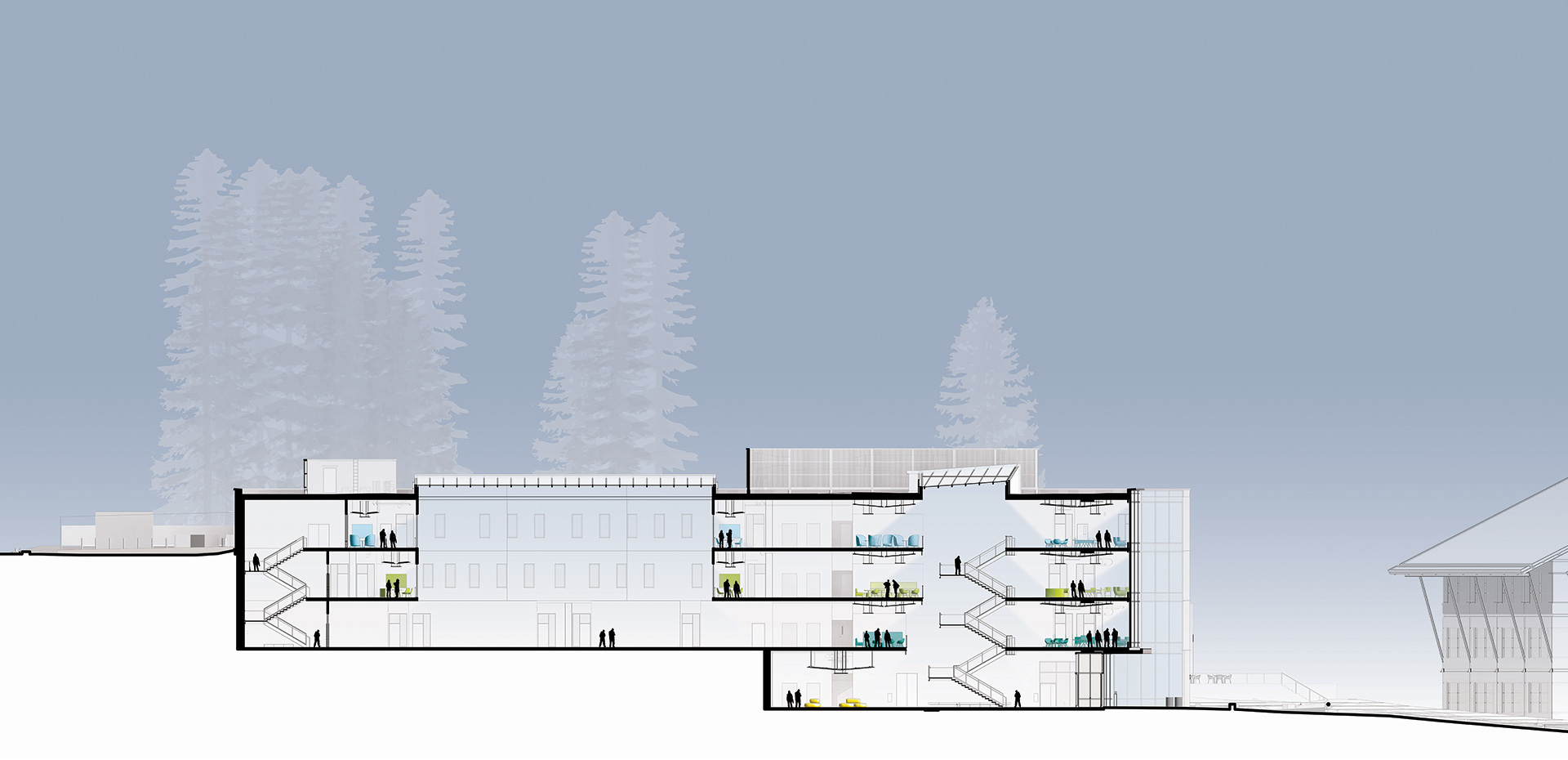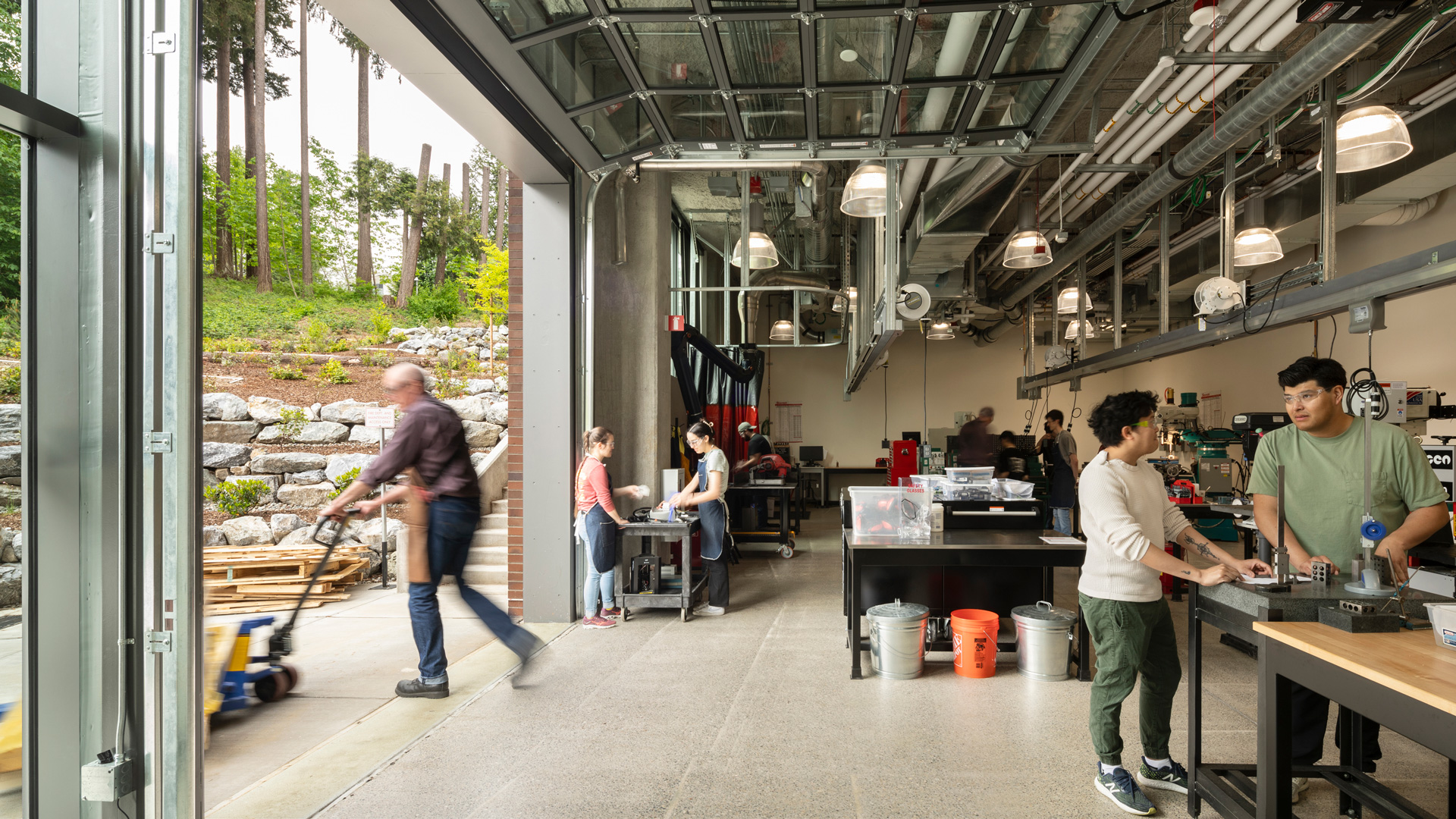Date Posted: 06.24.2025
Innovation Hall demonstrates how architecture connects institutions, people, places and nature. This 80,000 sf STEM facility brings together the University of Washington and Cascadia College, unifying their campus in Bothell, Washington, strengthening career pathways for students and healing the diverse landscape of a remarkable site.
Attracting students, especially those from historically underrepresented populations, to pursue careers in STEM fields is a fundamental goal for the project. The four-story building contains labs and classrooms for chemistry, biology, physics, computer science, and mechanical and electrical engineering, informal study areas and faculty offices. The project is certified LEED Gold.
INSTITUTIONAL PATHWAYS
Design Process Connects Partners
The college and the university were in the early phases of design on separate STEM facilities when financial constraints brought them together to create a single, shared academic building in spite of historical challenges with institutional collaboration. The Lease Crutcher Lewis | Mithun progressive design-build team helped them overcome their apprehensions, facilitating change management by engaging stakeholders in a dialogue about a common vision for project success.
The project opened the door to embracing a shared community identity, inviting students to start at a community college and continue their four-year education in the same inclusive and innovative learning environment, and fostering faculty collaborations across curriculum and research.

CAREER PATHWAYS
Placing Learning on Display
Innovation Hall maximizes visibility of learning, reinforcing career pathways that are fundamental to both institutions’ approach to recruitment, achievement and retention of diverse student bodies. Floor-to-ceiling glass at the ground floor provides views into the dynamic activity of University of Washington Bothell’s engineering capstone labs, stimulating all students’ interest in advanced programs and STEM careers.
Real-life work environments support project-based learning. For example, one of Cascadia’s computer science classrooms looks through a glazed wall to a server room where students work on network projects connecting instruction to practice.

Fostering Collaboration and Engagement
Dedicated labs, classrooms and faculty offices for each institution allow the college and the university to expand their academic programs to reach a broad audience inclusive of underrepresented populations. Spaces are organized to bring the institutions’ similar programs close to one another, fostering collaboration and creating opportunities for cross-disciplinary studies. The flow connects structured study, hands-on work, research, prototyping and the exchange of ideas.
Shared informal study spaces located in public areas on each floor provide a range of social and study environments, bringing university and college students together as a community of learners. Diverse, non-traditional students contributed to the design of these spaces, helping create an environment which makes them feel at home.
CAMPUS PATHWAYS
Connecting Campus Spaces
Innovation Hall is sited perpendicular to a steep slope on a forested hillside. The four-story building opens onto the main campus pedestrian spine at the bottom of the hill, connecting the college’s precinct of academic buildings and open spaces to the north with the university’s precinct to the south. Curtainwall glazing in student study areas, labs and classrooms opens views from the outside to student activities inside and from inside to the surrounding woods and wetlands.
The building’s south façade bends to embrace the hillside, creating outdoor terraces that connect program spaces to the forested environment and provide places for instruction. The articulated brick skin reflects the verticality and texture of the forest.

A Journey of Discovery
Innovation Hall’s building section creates an experiential, accessible pathway for the campus community from the ground level to the fourth floor that allows people to navigate the steep hillside, engage students, faculty and staff, and view activity inside program spaces as they move through the building.
The monumental stair in the east lobby which rises four stories underneath a large skylight is a key element in this sequence. Together with a three-story atrium at the west end, they bring daylight into the public spaces and anchor the gathering and informal study spaces.
The building’s west entry is at the top of the slope, across from the college’s parking garage. It features a belvedere looking out over the forested hillside and an art installation centering a raingarden.

NATURE’S PATHWAYS
Restoring the Hillside
Innovation Hall’s relationship to the hillside maintains the character of the Bothell campus. The experience of the building and the landscape celebrates the institutions’ commitment to environmental stewardship, making it part of people’s lives. Views of the forest from study spaces, labs, classrooms and offices foster biophilic connections.
The building connects the distinct landscape typologies on site from the upland forest at the west end of the slope to a pollinator garden at the lower east end.
Restoration of the hillside nurtures the long-term health of the surrounding forest. Planting design acknowledges climate change by utilizing species typical of Oregon and California and better adapted to hotter and dryer summers along with native plants. Trees removed for construction were saved as nurse logs to stabilize and provide habitat on the hillside.

Low Impact Development
Rain gardens and bio-filtration planters at the upper and lower-level building entries capture stormwater on site, filtering runoff before draining to the wetland system at the east end of campus. The system is visible as an educational tool and maintains predevelopment levels of on-site stormwater retention.
The landscape design maintains existing Bee Campus USA and SalmonSafe certifications. The plant palette infills existing “bloom gaps” in the pollinator cycle — periods when there are not plants available to local pollinators. Artwork in the main stair tells the pollinator story, bringing natural cycles into the daily experience of students and faculty.
workforce of the future
Since its opening in fall 2023, Innovation Hall has strengthened connections between the college and the university physically and programmatically, providing career pathways to the region’s high-demand occupations.
“This collaboration with Cascadia College is a game-changer for students at both of our institutions,” said Dr. Leslie Cornick, dean of UW Bothell’s School of STEM. “Students and faculty… have increased opportunities and cutting-edge facilities to collaborate and create new knowledge as we continue our commitment to increasing opportunity, equity and inclusivity and building a larger, more diverse workforce of the future.”